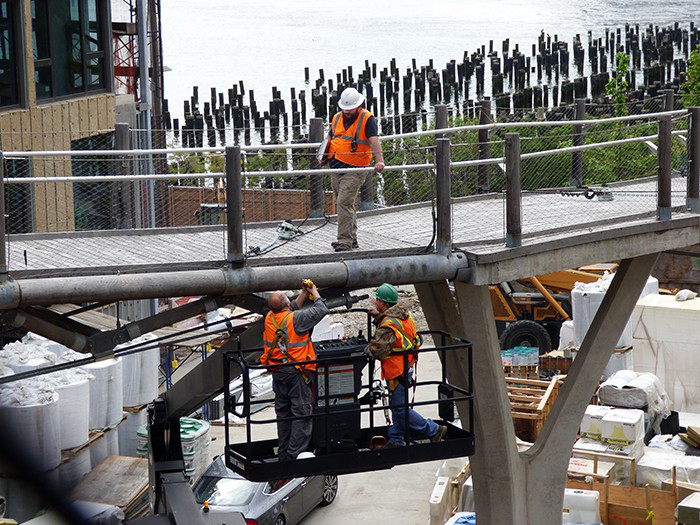Judge orders ‘bouncy’ Squibb Bridge design firm to allow Brooklyn Bridge Park access to key software

After being shut down more than two years ago, the lawsuit over “bouncy” Squibb Park Bridge, zig-zagging downward from Brooklyn Heights to Brooklyn Bridge Park, continues. Shown: An engineering team assesses the stability of the bridge in this photo taken last July. Photo by Mary Frost
Attorneys representing Brooklyn Bridge Park (BBP) won a legal skirmish last week in the ongoing lawsuit against the engineering firm that designed the broken-down Squibb Park Bridge.
The once-popular “bouncy” bridge connected Brooklyn Heights to Brooklyn Bridge Park.
Justice Charles E. Ramos told HNTB Corporation, which designed the bridge, to allow engineers from the park’s consulting firm, the Arup Group, to use HNTB’s proprietary software to review key data files related to the bridge’s design.

Brooklyn Heights
View MoreRead the Brooklyn Height's Press and Cobble Hill News. Find out more about Brooklyn Height's History here.